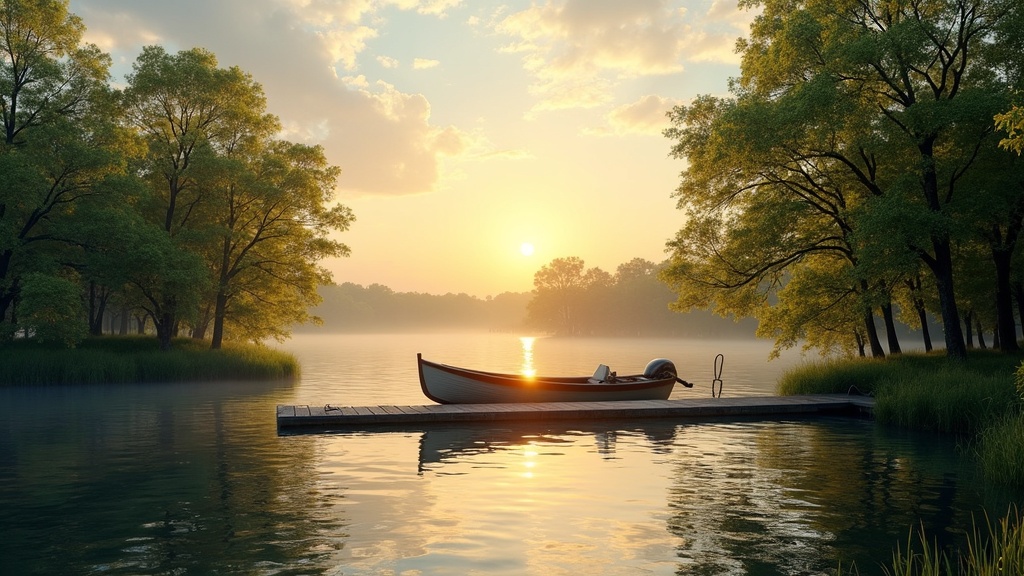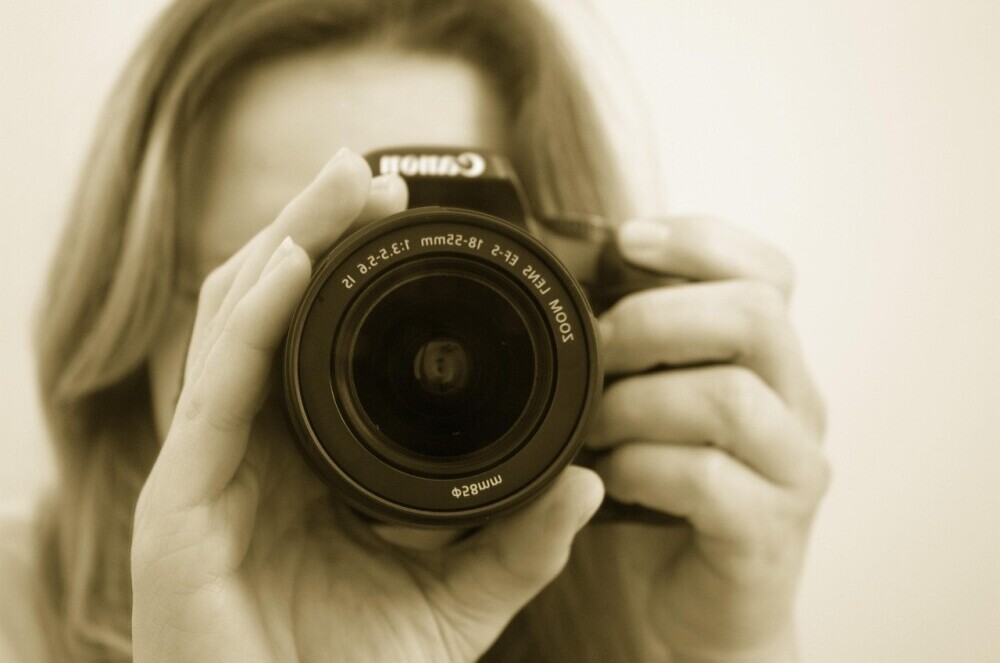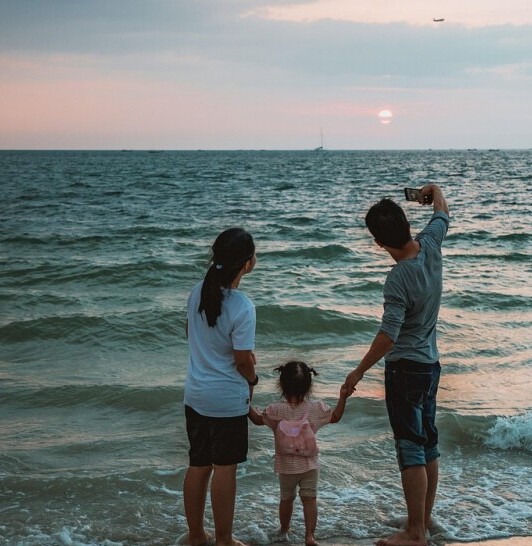Family moments on the water really stick with me, whether it’s lazy days on a lake, sailing trips, or paddleboarding at sunset.
Capturing those memories with your camera helps keep those days alive. Honestly, there’s just something extra special about water as a backdrop.
I’ll walk you through my favorite tips, techniques, and tricks for photographing your family adventures on the water.

Understanding Water Photography for Family Moments
Shooting family memories on water mixes a bunch of fun challenges. There’s the ever-changing light, constant movement, reflections, and, if you’re anything like my family, splashing kids who won’t sit still. Water scenes bring a whole vibe of freedom and joy, but making it work on camera sometimes takes a bit of know-how.
Photography by the water always caught my interest because it feels like every shot is a little different from the last, even if you’re in the same spot. The water’s surface turns into an ever-shifting backdrop and the sky usually puts on a show. Knowing how to work with these elements helps a lot. If you’ve ever watched your kids feeding ducks, skipped rocks with friends, or lounged on a dock with family, snapping a few photos becomes less about perfection and more about freezing those simple moments in time.
Best Times and Lighting for Water Photos
Hands down, early morning and sunset create some of the dreamiest shots. The so-called “golden hour” softens harsh shadows and bathes everyone in warm light, making smiles look natural and the water glow. If you ever want those “frame-this” family moments, this is when the magic happens. Reflections look deeper, faces look relaxed, and you can catch some really beautiful colors dancing off the water.
Even if you can’t make it for sunrise or sunset, overcast days are actually super useful for even lighting. No harsh glares, and faces won’t be lost in deep shadow; you just get soft, natural tones. The colors during cloudy days might surprise you-often, they’re richer and more vibrant, and you won’t have to worry about squinting faces.
- Tip: Avoid shooting at midday when the sun is overhead. Squinting faces and blown-out highlights are really common then.
Capturing Movement and Candid Action
Some of my favorite family photos didn’t happen when everyone was still and posed. Instead, it’s the action. The leap off a dock, the cannonball, the paddle splashing, or the first wobbly try standing up on a kayak. Family photography gets way more exciting when you embrace all the movement.
- Use burst mode on your camera or phone to snap a quick sequence. Later, pick the frame with midair hair, big grins, and water flying everywhere.
- Try following the motion, moving your camera as your subject runs or jumps, to get a dynamic shot that feels full of life.
- For extra stability, tuck your arms in, plant your stance, and gently lean with the rocking boat or dock. That helps keep images sharper, even when the ground is moving beneath you.
Fun Action Photo Ideas
- Paddle caught mid stroke with spray
- Kids racing to the end of the dock
- Canoe cutting through the reflection of clouds
- Water fight with siblings or friends
- Jumping in with a belly flop
Drawing Out the Details for Deeper Memories
Crowd shots are cool, but it’s the little stuff I love coming back to. Sunlight bouncing off a life jacket, water beading on toes, the weathered handle of a favorite fishing rod, or snack wrappers scattered on a lakeside picnic table; these details bring you right back to the experience years later.
Details tell the story and often call up specific feelings or inside jokes. Don’t be shy about getting close to capture sandy handprints, the way flip flops sit just so, or rainbow reflections in a puddle. From the texture of a well-used paddle to the glint of wet stones on the shore, these tiny scenes add rich layers to the story.
- Look for color or texture that stands out: colorful towels, shiny shells, or the reflection of a bright hat.
- Crop in on family hands untangling a rope, the shimmer of water droplets, sunbeams peeking through lake reeds, or where a sand castle meets the water’s edge.
Staying Steady Around Water: Keeping Photos Sharp
I know even the sturdiest dock or calmest boat rocks just enough to mess with your focus. Using a higher shutter speed helps freeze action and keeps things crisp. If you’re on a phone, tap the screen and hold still for that beat longer, or rest elbows on your knees for support. Consider setting your camera to sport or action mode to up your chances of crisp photos, especially around energetic kids.
- Bring along a small tripod or flexible mount designed for outdoor use; these are super handy for group photos. Just set the timer and gather everyone together.
- If you photograph with a mirrorless or DSLR, image stabilization (either in the lens or camera body) is a game changer and can save lots of shots.
Lean with the movement instead of fighting it. If you’re steady, your images will be, too. And when in doubt, it’s not a bad idea to shoot a few extra frames—one of them will be that perfect shot.
Highlighting Family Connections
Family shoots on the water make it easy to catch those genuine connections. Siblings sharing a paddleboard, parents teaching a kid to tie their first knot, grandparents cheering from the dock; these are the shots worth cherishing. The laughs mixed in with the occasional splash are what really stand out when you scroll back through your photos.
- Focus on interactions rather than getting everyone to look at the camera at the same time.
- Keep snapping when everyone thinks the photo session is over. Some of the realest smiles come out after posed shots wind down.
People Focused Photography Tips
- Frame your images with water in the background for context, but leave room for expression by shooting a bit wider.
- Capture hands, group hugs, or the laughter that comes after a splash.
- Try experimenting with reflections; sometimes the water gives you a fun double of your subjects that adds depth to the image.
Editing Your Water Family Photos for Natural Results
So many water shots benefit from a touch of editing, but I aim for natural adjustments. Bumping up the brightness, increasing color vibrance, and cropping out distractions usually does the trick. You don’t need fancy software; most phone editing apps work great.
- Warm up the color temperature for a sunset glow or mute colors for a moody, misty morning look.
- Try subtle contrast boosts to make faces pop against all that blue and green.
- If your photos feel too blue or washed out, try adjusting the white balance a bit warmer. The change can really give a boost to skin tones and make the scene feel more inviting.
Remember, aim for images that feel like how the day actually looked and felt. Overediting can lose the mood of the original moment. A good rule of thumb: when in doubt, less is more.
Managing Challenges Unique to Water Photography
- Sun Glare: Use a lens hood, polarizing filter, or your hand to block sunlight that bounces off water straight into your lens. Sometimes even wearing a hat with a brim lets you shield the lens in a pinch.
- Protecting Your Gear: Splashproof or waterproof cases for phones and cameras are worth it. I keep a microfiber cloth around; water spots show up quickly on lenses and screens, and you’ll want clear photos.
- Changing Weather: Out on the water, conditions switch up fast. Keep an eye on clouds and wind so you can grab your best shots before a storm rolls in or the sun disappears. Also, a quick-dry towel is a lifesaver if a sudden shower or splash happens.
Essential Gear for Family Water Photo Sessions
- Polarizing Filter: Great for cutting down reflections and making sky and water colors stand out. If you’re shooting with a phone, clip-on versions are available and handy.
- Dry Bag: I never leave home without one. It keeps your camera, snacks, and spare clothes safe from splashes and surprise rain.
- Quick Dry Towels: Handy for wet hands before you pick up the camera, or as props for kids to play on during the shoot. They also double as makeshift seats for sandy picnics.
- Spare Batteries and Memory Cards: Long days outside make it easy to run out. A spare battery or extra memory card keeps the fun rolling and ensures you don’t miss any family moments.
Frequently Asked Questions
Question: What’s the best camera for family water photography?
Answer: Any camera will work as long as you protect it. Phones, waterproof compacts, or DSLRs with a sturdy case each have their place. I often use my phone for quick, candid moments and bring out the big camera for portraits. Some adventure cameras are made for wet environments and can be tossed in a kayak or clipped to a life jacket.
Question: How do I get my family to relax for photos?
Answer: Keep things casual and fun. Don’t worry about perfect poses; just encourage everyone to play, explore, and be themselves. Sometimes a favorite activity (like fishing or building a stick raft) gets great shots without anyone feeling on display. Let little moments happen and have your camera ready.
Question: Any quick tips for shooting on water with kids?
Answer: Be patient and shoot a lot. Kids move fast and often ignore the camera, which is actually a good thing for natural photos. Let them have fun and focus on snapping moments when they’re lost in play. If you miss a shot, laugh about it and try again; sometimes the imperfect moments are the best ones.
Capturing the Magic: Why Family Photos on the Water Are Worth Every Splash
Snapping family memories on the water creates an album that carries not just smiles, but the feeling of sun, breeze, and laughter echoing off the lake or sea. Every picture becomes a shortcut back to those long summer days or new adventures. With a little care, some practice, and these practical tips, you’ll end up with photos that re-tell your family’s water moments for years to come.
So next time you’re near the water, camera or phone in hand, try these ideas and make those memories last.
**Here’s a little transparency: Our website contains affiliate links. This means if you click and make a purchase, we may receive a small commission. Don’t worry, there’s no extra cost to you. It’s a simple way you can support our mission to bring you quality pontoon boating content.
